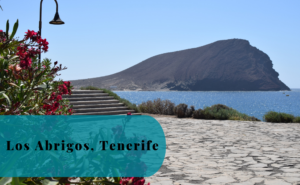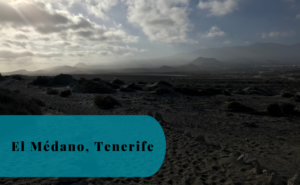Before going to Valencia in October 2014 we had decided that we should also see some other city in Spain during the trip. Zaragoza was one of the options together with Madrid. In the end, we ended up going to Zaragoza. We purchased the train tickets during our first full day in Valencia (that was the second day after leaving Sweden) and on day five of our trip, we boarded the train heading to the inland.
One of the reasons we opted for a visit to this particular place was its fascinating history. The city is the capital of the Zaragoza province and of the autonomous community of Aragon. There is no exact foundation date, but a Roman city, Caesaraugusta, was founded here between the years 25 BC and 12 BC. It became the capital of Aragon in 1118.
The city is famous for its annual festivities, Fiestas del Pilar that last for nine days and with the main day being on 12 October.
This is part 4 of 5 in our series Stories from Sunny Spain. Join us in remembering our visit to Valencia and Spain in 2014.



Our Trip to Zaragoza: a Train Ride from Valencia
After an early morning breakfast at a cafe close to the Estación del Norte (the train station in Valencia), we boarded our train to Zaragoza. The five-hour train ride did actually offer some amazing views of the Spanish inland. Well, five hours sitting still on a train is not the most exciting experience and it was nice when we finally were able to leave the train and start our adventure.
First Day in Zaragoza
Our first hours in Zaragoza we spent on foot, enjoying the new climate. As it turned out, the temperature was a bit colder than in Valencia. Our feet eventually took us to the old part of town, next to the river Ebro. This old part of town is very magnificent. It was also here that the hotel for our night in the city was supposed to be located. After a few minutes looking around with the help of Google Maps, we were still unable to locate the hotel. No hotel in the area had a matching name. Eventually, we decided to ask the locals and we were told that we were standing right outside of it. It just happened that the hotel had changed its name and the old sign had not yet been replaced.
We spent our first evening in Zaragoza eating at a delicious tapas buffet and drinking some tasty Spanish wine.
Second Day in Zaragoza
The next morning we were soon out again to explore. Having the Plaza del Pilar right outside of the hotel made it quite easy to continue where we had left off the evening before. We were soon walking around enjoying the view of the Basílica de Nuestra Señora del Pilar, the Fuente de la Hispanidad, and the Puente de Piedra – to mention a few.
Due to the time limit of only spending two days away from Valencia, we were soon heading back towards the train station. But before walking all the way there we had a few more things to see. We made sure to walk by the Palacio de la Aljafería, a fortified medieval Moorish palace. The palace is today used by the regional parliament of Aragon. Before lunch, we were also able to have a glance at the bullring – Plaza de Toros.
Eventually, we were back at the train station awaiting our train back to Valencia. I had finally been successful with ordering something else than beer in the bar. This time I was able to ask for two glasses of red wine instead, was my Spanish improving?



Recommendations for Visiting Zaragoza
There are several things that you should not miss while visiting Zaragoza. The culinary delights, the Spanish wine and do not even get us started about the sights. Here is our list of five sites that we believe that a visitor should not miss as well as three things you should make sure to try. If you would like more up-to-date information about sites in Zaragoza, we recommend you to check out Zaragoza Turismo >>
Five Sites of Interest
There are so many sites and places to see in Zaragoza and it is difficult to mention them all. Here is our list of top five attractions from what we had the opportunity to see during our visit.
1 – Basílica de Nuestra Señora del Pilar
Basílica de Nuestra Señora del Pilar is the building that you will see on most of the postcards. It really is the most striking construction in Zaragoza. In English, it is called Basilica of Our Lady of the Pillar. Its history dates back as far as to the first or second century AD. Most of the current building is from the 17th and 18th centuries, and it is in baroque style.The basilica has welcomed many notable visitors, including Spanish kings, foreign rulers, and saints.
2 – Puente de Piedra
Puente de Piedra, or the stone bridge, is a bridge that crosses the river Ebro. The bridge stands just next to the Basílica de Nuestra Señora del Pilar and it has two lions on pillars at each end. The bridge dates back to the 15th century. Reconstruction took place in 1659 and it was very important for the economic development of the region.
3 – Palacio de la Aljafería
Palacio de la Aljafería, or in English the Aljafería Palace, is a fortified medieval Moorish palace dating back to the 11th century. It is today housing the regional parliament of Aragon.
4 – Catedral del Salvador de Zaragoza
Catedral del Salvador de Zaragoza, or in English the Cathedral of the Savior of Zaragoza, is a Roman Catholic cathedral that dates back to the 12th century. It opened in 1318. The cathedral is built on the site of an old Mosque that was demolished to make way for the new building. The cathedral stands on Plaza de la Seo and it commonly goes by the name La Seo. It is a mixture of architectural styles, including Romanesque, Baroque, Neo-Classical, Mudéjar and Gothic elements.
5 – Plaza De Toros
This is a bullring that was first opened in 1764. The stadium holds around 10.000 spectators and has mainly been used for bullfighting.


What Else Not to Miss?
There is, of course, a lot more to a city than historical monuments and magnificent buildings. So what else would we recommend you to enjoy during your stay in Zaragoza?
The Food
Remember to try the local Aragonese cousin. We are no experts after a two-day visit to the region, but we were impressed with the food. It might not have been truly local all of it, but as with most places – make sure to enjoy the cuisine.
The Regional Wine
Wine is another thing that we are far from experts on. However, we really do like to try local wines when visiting different regions. Aragon was no exception and you should be able to find a variety of local wine during your visit.
To Improve Your Spanish
There is just something special about being able to order food or drinks in the local language. Well, at least according to us and what better way to learn than to try when you are visiting a place? We were only met with happy faces when I (Susann already speaks the language) attempted to order wine in Spanish.







XDDDDDDD